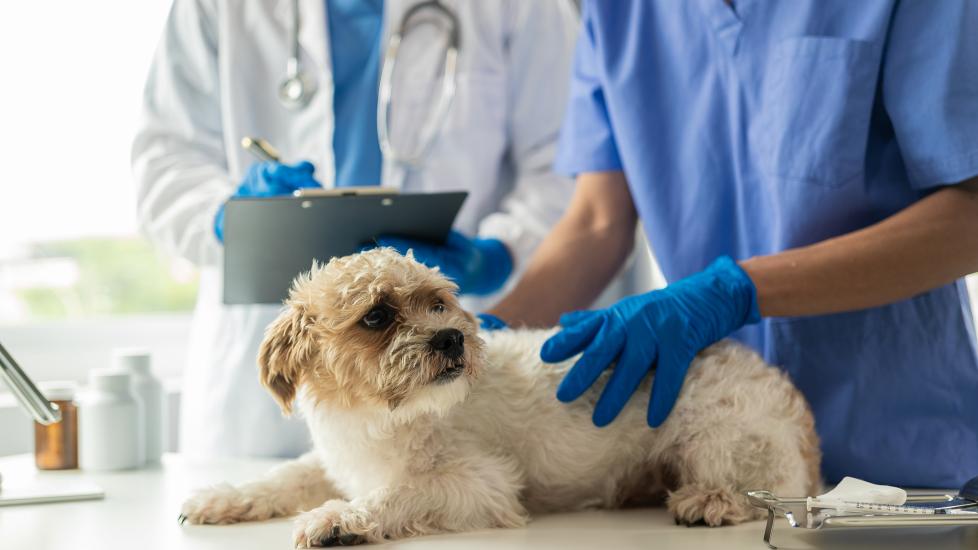Understanding Myasthenia Gravis: A Canine Condition Demystified
In the world of veterinary medicine, myasthenia gravis (MG) is a condition that can be both complex and challenging to diagnose. Primarily affecting dogs, this neuromuscular disorder leads to muscle weakness caused by a disruption in the normal communication between nerves and muscles. As pet owners or animal enthusiasts, it’s crucial to understand MG not only for our beloved furry friends but also as part of an ongoing effort to provide them with the best care possible.
What Is Myasthenia Gravis?
Myasthenia gravis is characterized by a malfunction in the transmission of signals from nerve endings to muscles due to antibodies attacking the acetylcholine receptors at the motor end plates. Acetylcholine is a neurotransmitter responsible for triggering muscle contractions; without its proper function, muscles fail to respond efficiently when stimulated. This results in varying degrees of weakness, particularly in those muscles that are used frequently—such as the eyes, face, limbs, and throat.
Causes of Myasthenia Gravis in Dogs
The exact cause of MG remains somewhat elusive, though several factors have been identified as potential triggers. Some breeds seem predisposed to developing MG, including bulldogs, pugs, basset hounds, and shih tzus. Additionally, certain environmental influences may play a role, such as exposure to toxins or other substances that disrupt the nervous system. In rare cases, tumors associated with the thymus gland could exacerbate symptoms or even initiate the onset of MG.
Symptoms of Myasthenia Gravis
Recognizing the signs of myasthenia gravis in your dog is critical for early intervention and treatment. Common symptoms include:
- Weakness in the eyelids, leading to drooping (ptosis) and difficulty opening their eyes.
- Difficulty swallowing food or water, which can lead to regurgitation and aspiration pneumonia if left untreated.
- Generalized muscle weakness that affects movement, stair climbing, jumping, and overall mobility.
- A change in bark quality or vocalization difficulties.
- Fatigue after exertion, where affected dogs require more rest than usual.
- Behavioral changes like lethargy or confusion, which can stem from neurological involvement.
- Spontaneous improvement followed by relapses, indicating fluctuations in disease severity over time.
Diagnosing Myasthenia Gravis
Diagnosis typically involves a combination of physical examination findings, blood tests, electromyography (EMG), and sometimes thoracic radiographs. The EMG measures electrical activity in muscles at rest and during contraction, providing valuable information about how well they communicate with nerves. Other diagnostic tools might include chest X-rays to assess the size and shape of the thymus gland, which can aid in identifying any underlying issues contributing to MG.
Treatment Options
Once diagnosed, treatment focuses on enhancing communication between nerves and muscles while managing clinical signs effectively. Medications commonly prescribed include corticosteroids like prednisone or immunosuppressants such as cyclosporine or azathioprine. These drugs help reduce inflammation and suppress the immune response that contributes to the destruction of acetylcholine receptors.
Physical therapy plays another important role in managing myasthenia gravis by maintaining strength, range of motion, and flexibility in weakened muscles. Occupational therapy may also be beneficial for dogs experiencing swallowing difficulties or limb weakness. Regular check-ups with your veterinarian are essential to monitor progress, adjust dosages based on individual needs, and address any complications that arise along the way.
Preventing Complications
Pet owners must take proactive steps to prevent life-threatening complications related to MG. Ensure your dog has access to plenty of fresh water at all times since drinking can become difficult due to throat weakness. Feeding moist foods instead of dry kibble makes ingestion easier for affected pets. Moreover, regular weight checks should be done because some medications can lead to increased appetite and subsequent obesity, which further compounds health problems in already weak animals.
Conclusion
Myasthenia gravis is a serious condition requiring patience, dedication, and close collaboration among pet owners, veterinarians, and specialists. By understanding the complexities of this disease and being aware of available treatments, we empower ourselves to give our canine companions the highest standard of care throughout their journey towards recovery and management of myasthenia gravis.
